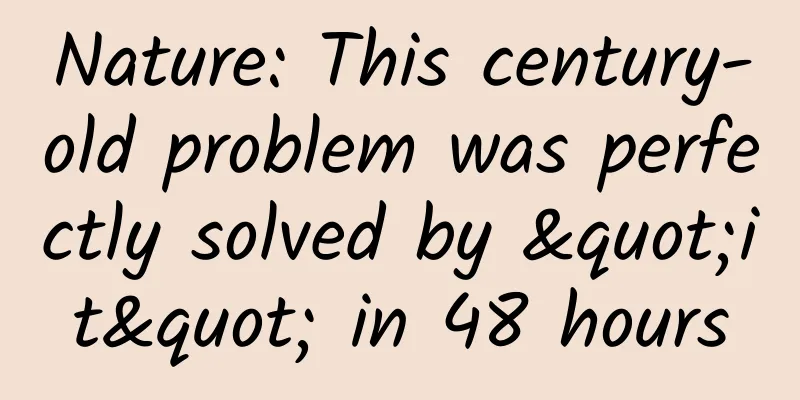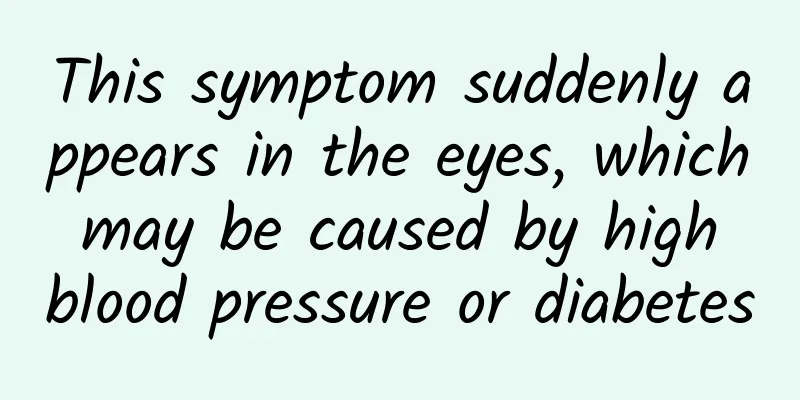Nature: This century-old problem was perfectly solved by "it" in 48 hours

|
In 1907, Belgian-American chemist Leo Baekeland invented a cheap, non-flammable general-purpose plastic (Bakelite). This invention marked the beginning of the modern plastics industry, and Baekeland was later hailed as the "Father of Plastics." However, plastic, once known as one of the greatest inventions of the 20th century, is now considered one of the most failed inventions. It is everywhere, and while it brings great convenience to human life, it also seriously pollutes our home planet. What’s even more frightening is that this strong and durable material often takes hundreds of years to degrade. The question is, if we shorten the degradation time of hundreds of years to a few days or even hours, like this: Then, can the problem of "white pollution" be easily solved? Now, a research team from The University of Texas at Austin and DEVCOM ARL-South has provided a new idea for solving one of the world's most pressing problems: white pollution. The research team invented a new enzyme with the help of artificial intelligence technology. This enzyme has the potential to promote the large-scale recycling of PET plastic (a type of plastic commonly used to make beverage bottles, films, packaging, etc.). Recycling and reusing plastic at the molecular level can greatly reduce unnecessary environmental pollution. The related research paper, titled “Machine learning-aided engineering of hydrolases for PET depolymerization,” was published in the authoritative scientific journal Nature on April 28. (Source: Nature) Biological enzymes created by artificial intelligence Plastics have been used in every aspect of our daily lives and are a necessity that we can hardly live without. However, poorly managed plastic waste will pollute the ecological environment on land and in the ocean. In theory, this problem can be avoided through plastic recycling, but the recycling of many plastics is not simple mechanical recycling, but involves melting and reprocessing. The process is very complicated, and the quality of the new plastic produced is not as good as the original plastic. PET plastic is a relatively common and safe plastic in daily life, accounting for 12% of global plastic waste. It is often found in various synthetic fiber production, food containers and thermoforming applications. PET plastic can be recycled by being broken down into its monomers at the molecular level, but the standard chemical depolymerization process is energy intensive, requires large amounts of bases and acids, and is therefore not economically or ecologically viable. Another potential solution is the use of enzymes. In the past 15 years, there has been a lot of progress in the research on plastic recycling enzymes, but so far, scientists have not found enzymes that work efficiently at low temperatures and cannot be used in large-scale industrial production, which has hindered the development of this recycling strategy. In this work, the researchers used a machine learning model to predict which mutations in the new enzyme would allow discarded plastics to decompose quickly at low temperatures. They tested the enzyme on 51 plastic containers, 5 different polyester fibers and fabrics, and all water bottles made of PET plastic, and demonstrated its effectiveness. Figure | Improving enzyme performance with machine learning methods (Source: this paper) The enzyme enables closed-loop recycling of PET plastics by breaking them down into smaller monomers at temperatures below 50 degrees Celsius, which can then be chemically repolymerized. In some cases, PET plastics can be completely decomposed within 24 hours. The research team said potential applications of the enzyme include cleaning up landfills and environmental remediation, and they plan to scale up the production of the enzyme in future work for use in large-scale industrial production. How much do you know about plastic? Plastic refers to a plastic (flexible) material that is processed and formed with high molecular weight synthetic resin/petroleum as the main component, and appropriate additives such as plasticizers, stabilizers, antioxidants, flame retardants, lubricants, colorants, etc., or a rigid material formed by curing and cross-linking. Plastic waste is difficult to decompose naturally. If it flows into the ocean, it will cause accidental ingestion, suffocation, poisoning, etc. to marine life, affecting the marine ecology. Incineration of plastic waste will also cause air pollution. Plastics such as polyvinyl chloride (PVC) and polycarbonates will even release harmful substances or endocrine disruptors under certain conditions, endangering the reproductive function of organisms. So, what types of plastics are there? What are their uses? Academic Jun summarizes some common plastics and special plastics for readers' reference: 1. Common plastic types and uses Polyethylene terephthalate (PET): beverage bottles, films, packaging. Polypropylene (PP): food packaging, household appliances, auto parts (such as bumpers). Polystyrene (PS): packaging materials, food packaging, disposable cups, plates, cutlery, CD and DVD folders. High impact polystyrene (HIPS): packaging materials, disposable cups. ABS resin/Acrylonitrile butadiene styrene (ABS): covers electronic devices (such as monitors, printers, keyboards). Polyester (PES): fiber, textile. Polyamides (PA): fiber production, golf balls, fishing lines, automotive coatings. Polyvinyl chloride (PVC): pipe production, shower curtains, window frames and floor coverings. Polyurethanes (PU): foam insulation, fire protection, and fire extinguishing foam. Polycarbonate (PC): CDs, sunglasses, protective shields, safety glasses, indicator lights, lenses. Polyvinylidene chloride (PVDC): Packaging (such as food and medicine). Polyethylene (PE): films, packaging bags (common plastic bags), filling bottles (such as shower gel, detergent), and water pipes. Polycarbonate/ABS resin (PC/ABS): A fusion of PC and ABS plastics, it is stronger and is used in automotive interior and exterior accessories and mobile phone casings. 2. Other types of plastics and their uses Polymethyl methacrylate (PMMA): contact lenses, glass (such as plexiglass). Polytetrafluoroethylene (PTFE): Heat-resistant, low-friction coating: non-stick coating for non-stick pans, sealing tape for plumbers, water slides in amusement parks, etc. Polyetheretherketone (PEEK): chemically and heat-resistant thermoplastic with high biocompatibility, used in medical implants and aerospace products. Polyetherimide (PEI): a polymer that is resistant to high temperatures, chemically stable, and non-crystallizable. Phenolics (PF): commonly known as Bakelite, high modulus, relatively heat-resistant, fire-resistant and excellent polymer. Used for electrical equipment insulation parts, paper laminates, thermal insulation foam materials. Urea-formaldehyde (UF): tableware, decorations, electrical parts, distribution equipment, telephone receivers, auto parts, plywood, adhesives, coatings, buttons, containers, mahjong tiles, clock dials, chopsticks, buttons, bottle caps, etc. Melamine formaldehyde (MF): Resin processing of glass, tableware, decorations, electrical accessories and housings, switchboards, mechanical parts, auto parts, photosensitive boards, coatings, adhesives, containers, paper, and cloth. Polylactic acid (PLA): A polymer that can be decomposed by microorganisms and converted from corn starch. Currently available on the market, such as transparent boxes for water-selected eggs. Although plastic has become an indispensable necessity in human life, in order to solve the problem of white pollution and protect the land and oceans on which human beings depend for survival, human beings not only need to further strengthen their environmental awareness, but also need to use the power of science and technology to handle plastic waste more greenly and create more green plastic alternatives. Reference Links: https://www.nature.com/articles/s41586-022-04599 https://www.nature.com/articles/d41586-022-01075-6 https://news.utexas.edu/2022/04/27/plastic-eating-enzyme-could-eliminate-billions-of-tons-of-landfill-waste/ https://en.wikipedia.org/wiki/Plastic https://en.wikipedia.org/wiki/Plastic_pollution Academic headlines |
Recommend
Hurry up! These plants at home can be kept alive by picking a leaf!
Spring is the season for everything to grow. Thes...
How to obtain seed users during the cold start period?
For Internet products, if there are no users, no ...
Apple adjusts developer support terms, Mac developers can choose to push app updates in stages over 7 days
Apple recently adjusted its developer support ter...
Chinese Stars丨A picture will help you clarify the difference between "boat" and "boat"
How much do you know about "Shenzhou" a...
Hot 2022 Chengdu Tea Tasting with its own studio
Reservation arrangements for Chengdu Tea Tasting ...
Reuters: Mobile phone innovation has reached its end or may be replaced by other products
Reuters published an article today saying that th...
Are aliens really here? Scientists make shocking statement: There is alien technology in the Pacific Ocean!
The claim that "aliens" left technology...
Is there good weather and bad weather in space? Scientists reveal the secrets of "space weather" | World Space Week
World Space Week is held from October 4 to 10 eve...
Google launches simplified Android system in India to develop low-end market
Google recently released a simplified version of ...
Tik Tok live broadcast operation skills (super detailed)
The short video live broadcast room started a new...
Wuwei Academy Wuwei Teacher Main Line Capture Dragon Sixth Episode
Introduction to the sixth episode of Wuwei Academ...
Creating JavaScript modules with Babel and ES7
Last year, a new version of JavaScript was releas...
Tik Tok launches its first mini-program game, let’s dance to the magical song!
After Toutiao announced its entry into the mini p...
Can locust plagues be avoided by pinching the locusts' "nose"?
Produced by: Science Popularization China Author:...
How to produce high-quality product copy?
1. Purpose of writing First of all, we need to un...









